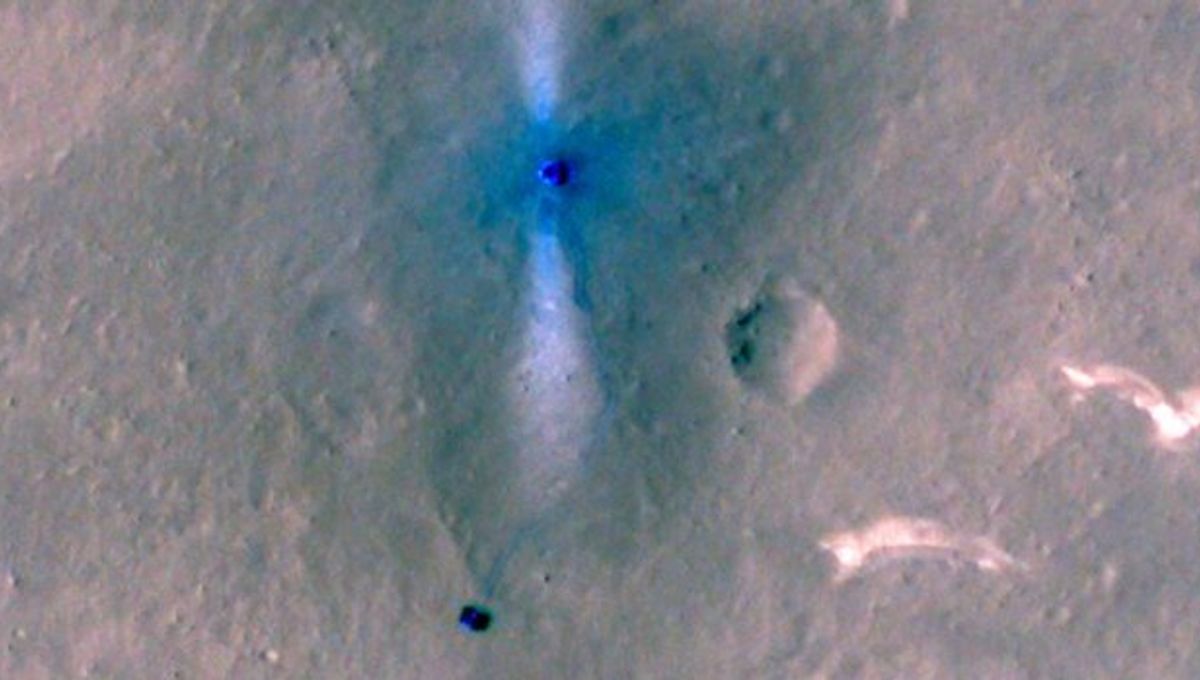
The Zhurong rover has found evidence of pleasant sandy beaches that once surrounded Mars’ long-lost northern ocean, adding to a picture of a very Earthlike planet at one point in time. Although the announcement might have space tourism proponents salivating, the more immediate significance lies in helping focus the search for signs of ancient Martian life.
ADVERTISEMENT GO AD FREE
Plans to settle on Mars run into a great many objections, but perhaps the key one is the economic justification for the immense expense. We send many scientists and support people to Antarctica for research, but the numbers of residents at any time are still modest, and Martian costs would be astronomically higher. Many doubt there are enough tourists willing to pay to subsidize a functioning local economy.
Perhaps we’re just too late, since potential civilian space farers would once have been drawn not only by the thrill of setting foot on another world, but a relaxing time lying on its seaside beaches.
“We’re finding places on Mars that used to look like ancient beaches and ancient river deltas,” said Dr Benjamin Cardenas of Penn State University in a statement. “We found evidence for wind, waves, no shortage of sand — a proper, vacation-style beach.”
From May 2021 to May 2022, the Zhurong rover prowled southern Utopia Planitia, on the outskirts of Mars’ northern lowlands, using radar to see buried rock formations. Cardenas is part of an international team analyzing the radar reflections. These include layered structures that resemble Earthly “foreshore deposits” that slope down towards oceans and are shaped by wind and tide.
Mars would never have had much in the way of tides. Even if Phobos and Deimos date back as far as the Noachian period when the Martian Ocean existed – no sure thing – they’re very small. Waves are a different matter since the presence of liquid water required a much thicker atmosphere than Mars has today, one that could have produced winds capable of raising swells, and Cardenas says the evidence is now there.
“This stood out to us immediately because it suggests there were waves, which means there was a dynamic interface of air and water,” Cardenas said. “When we look back at where the earliest life on Earth developed, it was in the interaction between oceans and land, so this is painting a picture of ancient habitable environments, capable of harboring conditions friendly toward microbial life.”
ADVERTISEMENT GO AD FREE
Indeed, the similarities between the images Zhurong returned and those taken using similar equipment on ancient beaches on Earth are notable. For example, the 6° to 20° dip angles Zhurong detected were within the normal Earthly range, despite the different gravities. The team particularly noted the similarities to sites around the Bay of Bengal. The team concluded other explanations such as ancient riverbeds or volcanic activity don’t fit with the sort of layers Zhurong revealed.
The idea that the Martian lowlands were once a vast ocean has become dominant in public discussion as a result of finds made by NASA’s rovers, and images that look like ancient shorelines to orbiters. However, some planetary scientists remain skeptical, mostly because of inconsistencies in the altitudes of the apparent shorelines.
These findings strengthen the case further, as well as providing much finer detail than we have had before about how shorelines changed over time.
“We’re seeing that the shoreline of this body of water evolved over time,” Cardenas said. “We tend to think about Mars as just a static snapshot of a planet, but it was evolving. Rivers were flowing, sediment was moving, and land was being built and eroded. This type of sedimentary geology can tell us what the landscape looked like, how they evolved, and, importantly, help us identify where we would want to look for past life.”
ADVERTISEMENT GO AD FREE
Even when Mars was warm enough to sustain a liquid ocean, the waters were probably too cold to entice the average Earthly resident. Sunbathing may also have had limited appeal when the light came from a fainter and more distant Sun. Still, who knows what other attractions ancient Mars once had to offer – imagine skiing down mountains the size of Olympus Mons, under low gravity to soften the impact if you fall.
The study is published open access in the Proceedings of the National Academy of Sciences.
Source Link: Ancient Martian Ocean Once Had Sandy Beaches Well Suited To Holiday Resorts